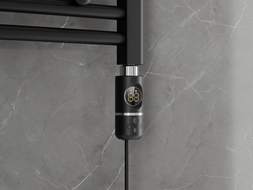
A sink faucet - at first glance, it may seem like a minor detail, but in reality, it is a very important element of bathroom fixtures. It not only influences the style of the bathroom and the character of the arrangement but primarily facilitates personal care activities. A good faucet should be functional and equipped with technological conveniences to ensure comfort of use and guarantee a reduction in water consumption. How to choose the right model? What should you pay particular attention to?
Sink faucet - selection criteria
Selecting the right faucet is quite a challenge. It should meet our expectations not only in terms of installation method, shape, and size but also provide an appropriate flow and economical water use. An important selection criterion is the ability to program the desired water temperature, allowing the user not to manually adjust it. The type of spout and the material it is made from is also important. Additionally, one should keep in mind that the fixture should be of good quality since it will be intensively used. Before making a choice, it is worth thoroughly analyzing the available market offers. It is best to choose a faucet from reputable manufacturers who have proven the reliability of their solutions over years of operation in the market.
Classification of sink faucets by installation method
One of the most important selection criteria for sink faucets is the method of installation. We encounter the following solutions here:
- wall-mounted (concealed and exposed) directly connected to the water supply located in the wall. They need little space and do not take up room on the sink. Such models work excellently in small bathrooms;
- deck-mounted, also known as pedestal - typically mounted on the edge of the ceramic basin. This option allows easy access to the siphon and all connection elements. This is especially important in the event of a potential appliance malfunction;
- countertop - installed directly on the countertop, without the need to drill holes in the sinks. They provide an interesting decorative effect and give the bathroom an exclusive character; countertop faucets are an original alternative to classic deck-mounted fixtures;
- freestanding - mounted to the floor, which provides durability and stability. The innovative appearance of freestanding systems introduces a timeless accent to the bathroom.
Bathroom sink faucets with various handle types
One feature we particularly appreciate in bathroom faucets is ease of use. Therefore, we are increasingly moving away from somewhat outdated two-handle variants, replacing them with single-handle or even touchless ones. Which one should we choose for our interior to meet user expectations? Let's take a closer look at the individual models:
- two-handle faucet - until recently, the only solution functioning in most bathrooms. It is equipped with two separate knobs for adjusting the water temperature and pressure. More modern designs offer lever handles instead of knobs. This type of sink faucet is not very convenient to use, as both elements must be operated to set optimal flow values. Deciding on this type of appliance, it is worth knowing that it is not an economical and environmentally friendly solution. Temperature adjustment takes more time, which increases water consumption;
- single-handle faucet - consists of one lever and a mixing head, which control the water temperature and flow intensity. It is a convenient system because using the same handle you can adjust the appropriate water parameters. By operating it horizontally, you set the temperature, and vertically - the desired pressure. In terms of comfort and economic use, it outperforms two-handle fixtures.
Modern touchless faucets
In bathrooms, modern faucets are increasingly integrated, matched in shape, color, and material to contemporary fixtures made of ceramics, glass, stone, teak wood, or even unpolished river stone. Thanks to innovative control methods, they not only provide a stunning impression but also cater to those who fancy unconventional solutions. In this group, we find:
- a well-known and commonly found self-closing faucet in public restrooms. Its activation requires a single user action. After a few seconds, it automatically closes the water flow. It resumes when the button is pressed again;
- an electronic touchless faucet equipped with a special infrared sensor that automatically turns on and off the water emission when it detects a hand presence;
- an innovative sink mixer, which includes an elegant spout and an adjacent electronic controller that allows manual or remote (using a remote control) control of water parameters.
Touchless faucets, self-closing, and electronic ones are designed for enthusiasts of sterile cleanliness and environmental protection advocates. Using them means not only saving money but also caring for the environment. Thanks to their use, significantly less water is wasted.



















